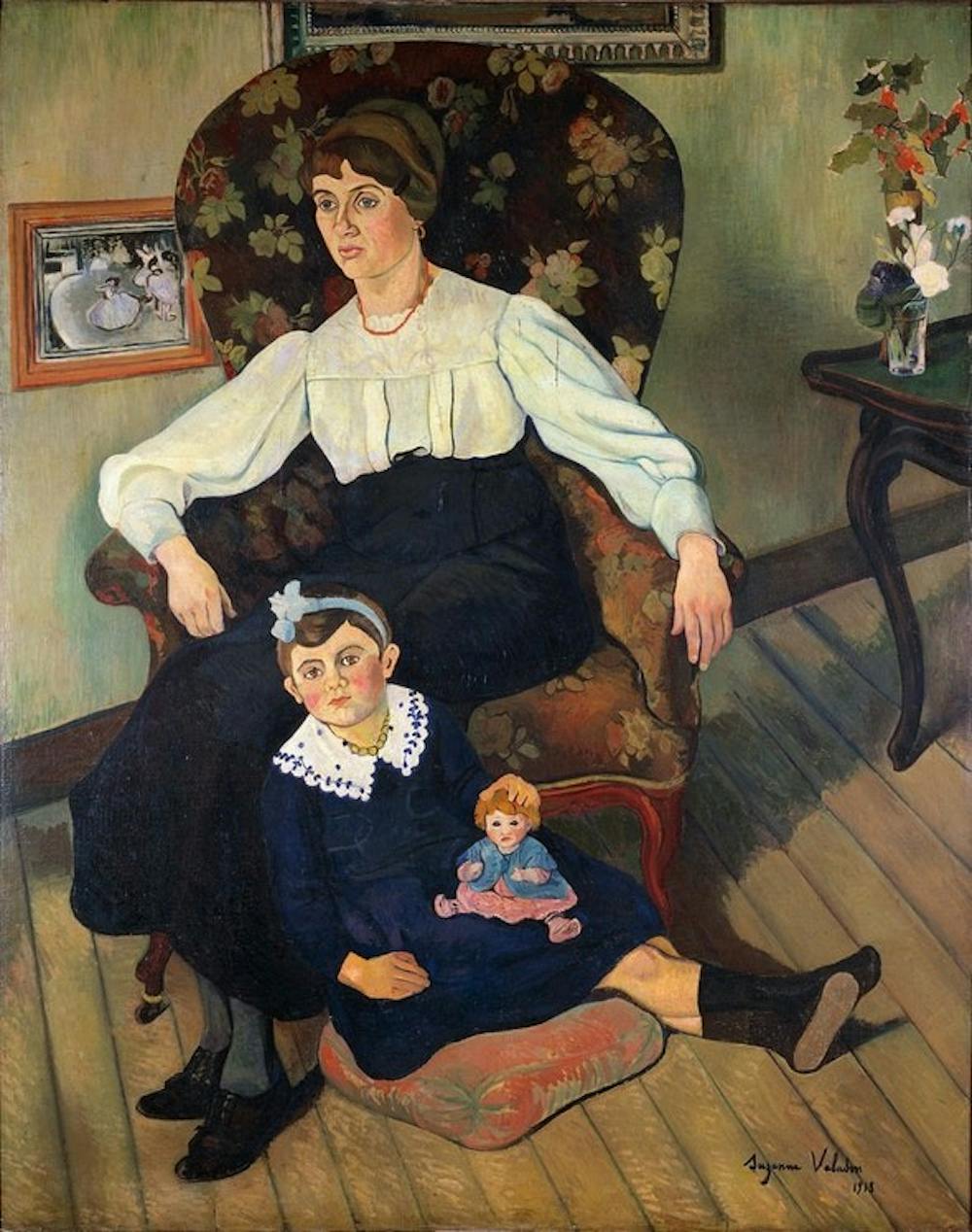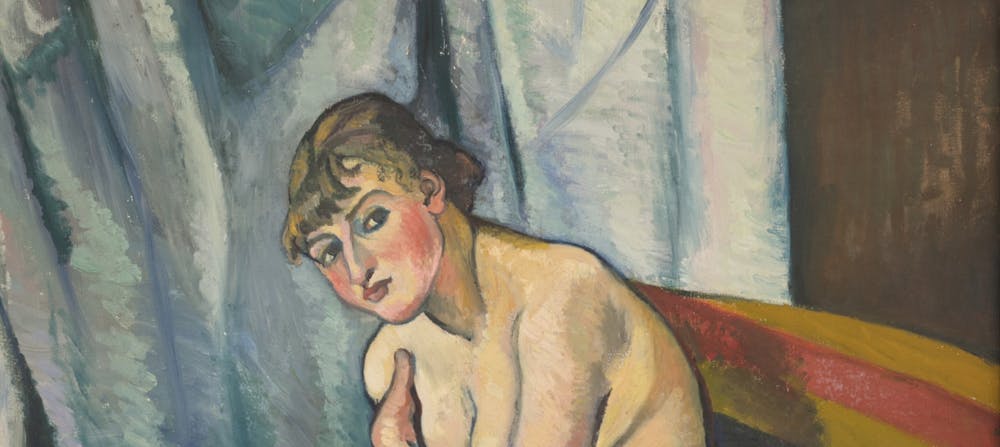The Barnes Foundation’s new retrospective of Suzanne Valadon, the first of its kind in North America, opens not with one of the artist’s many works—but with a painting of Valadon herself. In Gustav Wertheimer’s imposing The Kiss of the Siren (1882), we catch a glimpse of Valadon as a muse. Under Wertheimer’s hand, we see the petite, brunette Valadon doctored into a leggy, fairytale blonde. However, this is not the only deceiving representation of the model turned artist; opposite Wertheimer’s painting, we see portraits from artists including Toulouse–Lautrec. For the most part, these renditions portray the young model as exuberant and eager—but they belie the physical demands of her job, not to mention her precarious station.
Curator Nancy Ireson mentions that, according to one callous critic, Valadon was “raised in the gutter," running through a string of manual jobs before landing in the Parisian art scene at the age of 15. Her modeling work could be punishing. Besides the physical strain of posing for hours, she likely faced the social stigma of her occupation. In 19th–century Paris, artists’ models, particularly those who posed nude, were considered to be on par with sex workers. But these very beginnings would prove essential to her artistic legacy.
Long hours posing in the studio introduced her to artistic techniques, and one can imagine the reputed young model acquired a taste for being on the other side of the canvas. Models—certainly ones as popular as Valadon—are deeply involved in the creative process. Look no further than The Kiss of the Siren, where she twists her torso at an improbable slant. Here one could easily argue that she was as much an agent of creation as the artist himself. Thus emerges the exhibition’s through–line: Valadon’s reappropriation of the female body for her own creative ends.
Valadon’s artistic exploration of the female form begins tentatively, with spare sketches and etchings. Encouraged by Edgar Dégas, she turned her eye towards the women surrounding her, must notably her maid Louise, whom she captured in a series of nudes. These early drawings are severe, with the subject engaged in intricate, demanding poses that betray an unexpected lack of sympathy from the model turned artist. However, viewers can delight in Valadon’s progression from these aloof nudes to more lively renditions of everyday scenes involving women and children. Highlights include the dynamic, swooping bather of Marie Bathing with Sponge; the charming, gesturally rich Children Dressing in the Garden; the tender sketches of her son, Maurice Utrillo.

The show introduces Valadon’s nudes with the insistence that these famous works arose mostly by happenstance. A label clarifies that the artist was merely responding to market demands for nude women. Valadon’s lack of erotic interest is apparent throughout, as she renders her subjects washing, grooming, or merely resting. The tone is warm but decidedly unsexy. In works like 1923’s The Two Bathers, the artist works not to titillate but to sympathize. The unflattering squat poses here are a reversal of the show’s opening piece. Valadon is keenly interested in women, but not merely for their bodies.
Both subjects are fully clothed in the piercing Marie Coca and Her Daughter Gilberte, yet the portrait is by far the most revealing painting in the show. The picture’s ominously tilted floorboards, coupled with Marie’s vacant eyes and slack body, gesture towards a critique of stringent married life. In the same vein, Valadon’s many nudes undress their subjects’ psyche more so than their bodies. By turns, she exposes the trappings of womanhood and alludes to its hidden power. Valadon's art is keenly aware of the pressures women faced, representing them in their most vulnerable physical states.

Suzanne Valadon
Maria Coca and Her Daughter Gilberte, 1913
Musée des Beaux-Arts de Lyon
Artwork © 2021 Artists Rights Society (ARS), New York
Image © DeA Picture Library / Art Resource, NY
Not to diminish Valadon's genius, much of her technical acuity can be attributed to her close relationships with other artists. Valadon learnt by observing artists in action (first her clients and then her peers), and references abound in her work. Her affinity for patterns and textures recalls Matisse; her love of flat colors and nature motifs hint at Gauguin; we even catch a whiff of Soutine in the exquisite Still Life with Drapery and Bouquet. With this stylistic agility, Valadon often finds herself grouped with her most eminent male contemporaries. In her lifetime, Valadon habitually turned down group shows with women, a decision that testifies to her self–assurance in the boys’ club of modern art.
Yet, despite her critical stature, Valadon’s work is often misread or neglected in the popular imagination. In her later years, she increasingly found herself a footnote to her son’s artistic accomplishments. With this historical awareness, the exhibition glosses over the details of the artist's biography, particularly where it concerns her son. But this reluctance to discuss Valadon’s relationships with men leaves much to be desired.For the artist who so sharply rendered the doldrums of motherhood in Marie Coca and Her Daughter Gilberte, surely her relationship to her son was formative. The viewer is left itching for a more complete portrait of mother and son—a desire that holds true for the other men in Valadon’s life. In brushing over her relationships, the exhibition obscures Valadon’s power as an agent. Yet we can have faith that as a breadwinner and an artist, Valadon was always in control.

